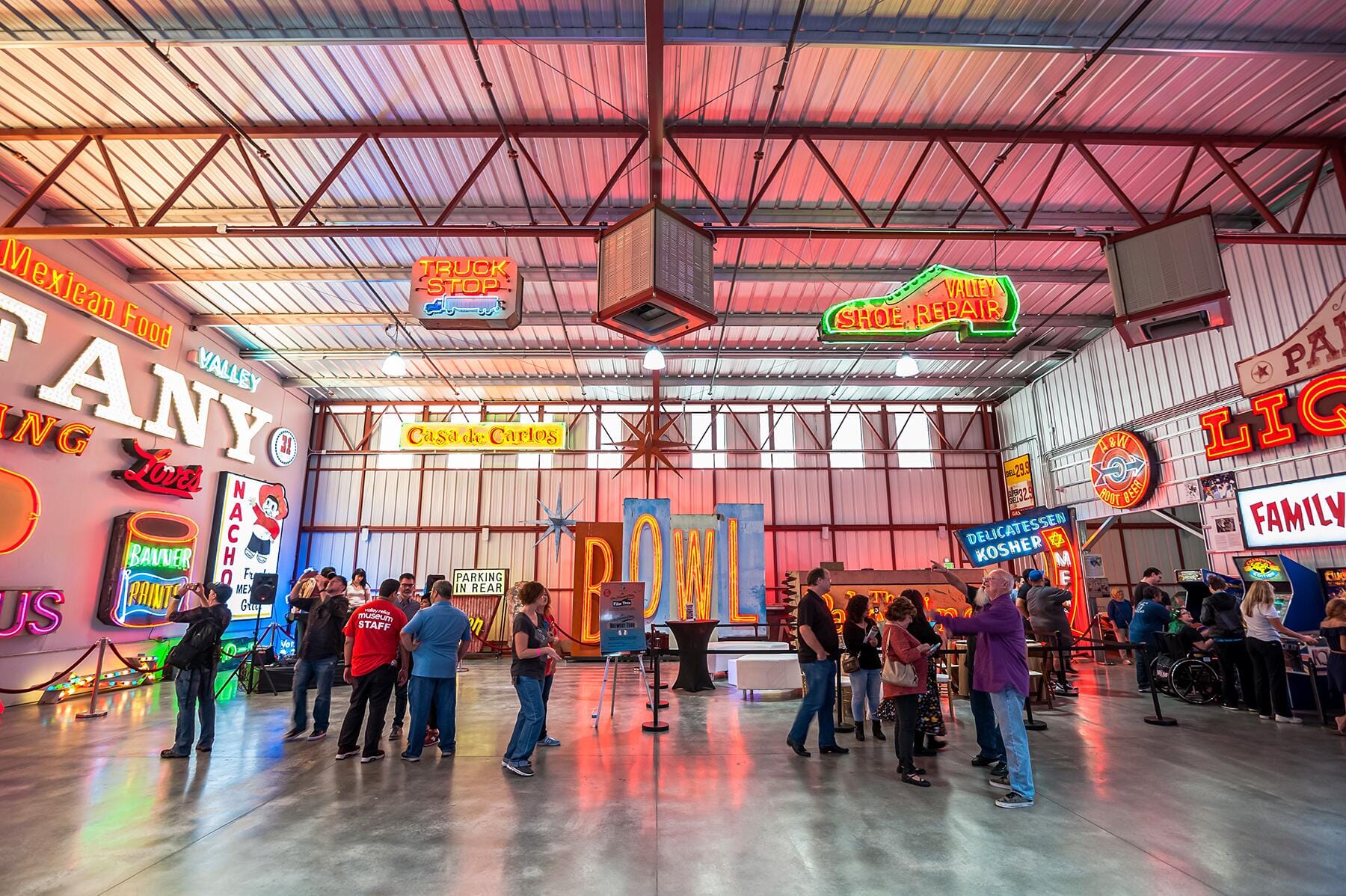Go beyond Los Angeles’ museum heavy hitters.
You’ve weaved through the lampposts outside LACMA. You’ve explored every corner of the Getty (yes, both Center and Villa). You’ve snapped some next-level selfies in the Yayoi Kusama infinity mirror room at The Broad. But now that you’ve checked all of Los Angeles County’s blockbusters off your list what’s next? Here are five smaller museums that will show you a whole new side to the City of Angels.
Museum of Jurassic Technology
WHERE: Palms
Whether or not the Museum of Jurassic Technology really counts as a museum is up for debate. It’s not a museum per se but a commentary on museums and their nature…in the shape of a museum. But, for simplicity’s sake, we’ll say it has enough museum-like elements for the purposes of this round-up.
Stepping into the Museum of Jurassic Technology is a lot like crossing over into another dimension. You leave the sundrenched bustle of Venice Boulevard and enter a cool, dimly lit space that’s filled with exhibits and “artifacts” that have the cadence of being grounded in facts and history. Inside you’ll find exhibits entitled “Garden of Eden On Wheels: Collections from Los Angeles Area Mobile Home Parks,” “Athanasius Kircher: The World Is Bound With Secret Knots,” and “Tell The Bees: Belief, Knowledge & Hypersymbolic Cognition.” All of it is real in the sense that they are tangible items, but the way in which they’re assembled is a mix of fictions, facts, and half-truths. It’s reminiscent of how one moves through a museum or an exhibit where you were faintly familiar with the subject but have no expertise of your own, so you allow yourself to put your faith in the authoritative veneer of the institution, thereby allowing that veneer to—in our personal estimation—transmogrify and cross over into the realm veracity.
As a meta-commentary, a work of art, and a curiosity, you’ll emerge from the Museum of Jurassic Technology’s corridors enchanted by its beauty well as well as its riddles.
Valley Relics Museum
WHERE: Van Nuys
Take the 405 north and you’ll soon (well, thanks to traffic, eventually) be in the Valley. The San Fernando Valley often overlooked in favor of all that lies within the Los Angeles Basin to its south. But the Valley is just as much a part of Los Angeles County as Hollywood or Venice Beach. In order to preserve the region’s distinct character and history, the Valley Relics Museum (currently located in two airplane hangers at the Van Nuys Airport) was born. The pieces on display—from BMX bikes to a room full of neon signs from bygone Valley institutions—pay tribute to a retro, lightly-oddball kind of Americana that could only exist in this very specific pocket of southern California.
Recommended Fodor’s Video
The Museum of Flying
WHERE: Santa Monica
The Museum of Flying (just south of the Santa Monica Airport) boasts an impressive collection of aircraft and artifacts related to the world of aviation. But perhaps the most exciting selling point is the museum’s flight simulator. But don’t let the phrase “flight simulator” put visions of hunkering down in front of a stationary PC to play what’s effectively a pretty boring video game in your head. The MaxFlight FS3000 allows you to climb into a standalone cockpit with 360 degrees of “pitch and roll technology.” That means you climb in, get behind the controls, and you can fully feel yourself turning left, right, and upside down as you navigate the scenario (thrilling mid-air dog fight or relaxing flight over Los Angeles) of your choice. It’s as close as you can get to flying an aircraft without having to get your pilot’s license first!
INSIDER TIPAccording to their website, you should ignore the signage on Ocean Park Boulevard, as they will direct you to the old location.
Bunny Museum
WHERE: Altadena
“A bunny museum,” you think. “What could be a cuter outing for me and my pre-school-age children?” Slow down there! The Bunny Museum (located in the unincorporated area of Altadena just north of Pasadena) isn’t all cute bunny-related memorabilia (though it does boast a massive collection of cute bunny-related memorabilia). “Children are welcome, for sure, but they are not the target audience,” advises the Bunny Museum’s website. In addition to the staggering collection of bunny figurines, art, other objects, and even real pet rabbits (available for petting), the museum’s exhibits are made up of delicate antiques (including a 2,000year-old ring) as well as The Chamber of Hop Horrors, a display which chronicles the abuses visited upon rabbits in the name of scientific experiments and lucky rabbit foot keychains.
Museum of Neon Art
WHERE: Glendale
Neon signs have come to be associated with a city’s dingier elements—dodgy dive bars and sleazy night clubs—the ones a person might encounter over the course of pursuing a film noir-esque mystery. But when neon signs were first introduced in America during the first part of the 20th-century, they were used to “adorn high-end venues and restaurants, and conjured associations of bright-lit city life.” But a combination of white flight from urban centers and the fact that neon signs are difficult to make and even more difficult and expensive to fix (which meant when a sign broke, it tended to stay that way), lead to a downfall in popularity.
That neon signs and art still has a foothold on the modern landscape is owed to enthusiasts and establishments like The Museum of Neon Art (conveniently located across the street from The Americana at Brand in Glendale). The museum features a permanent collection, as well as a rotating slate of exhibits that explore neon’s storied past and exciting future. But your experience needn’t be limited to the grounds of the museum—the museum offers Neon Cruises that take guests on nighttime bus tours of Los Angeles’ most iconic signs, marquees, and installations. Inspired by everything you’ve seen? Consider taking a class (one-day classes are occasionally available) that instruct students on how to create using this medium that exists at the crossroads of art and science.




